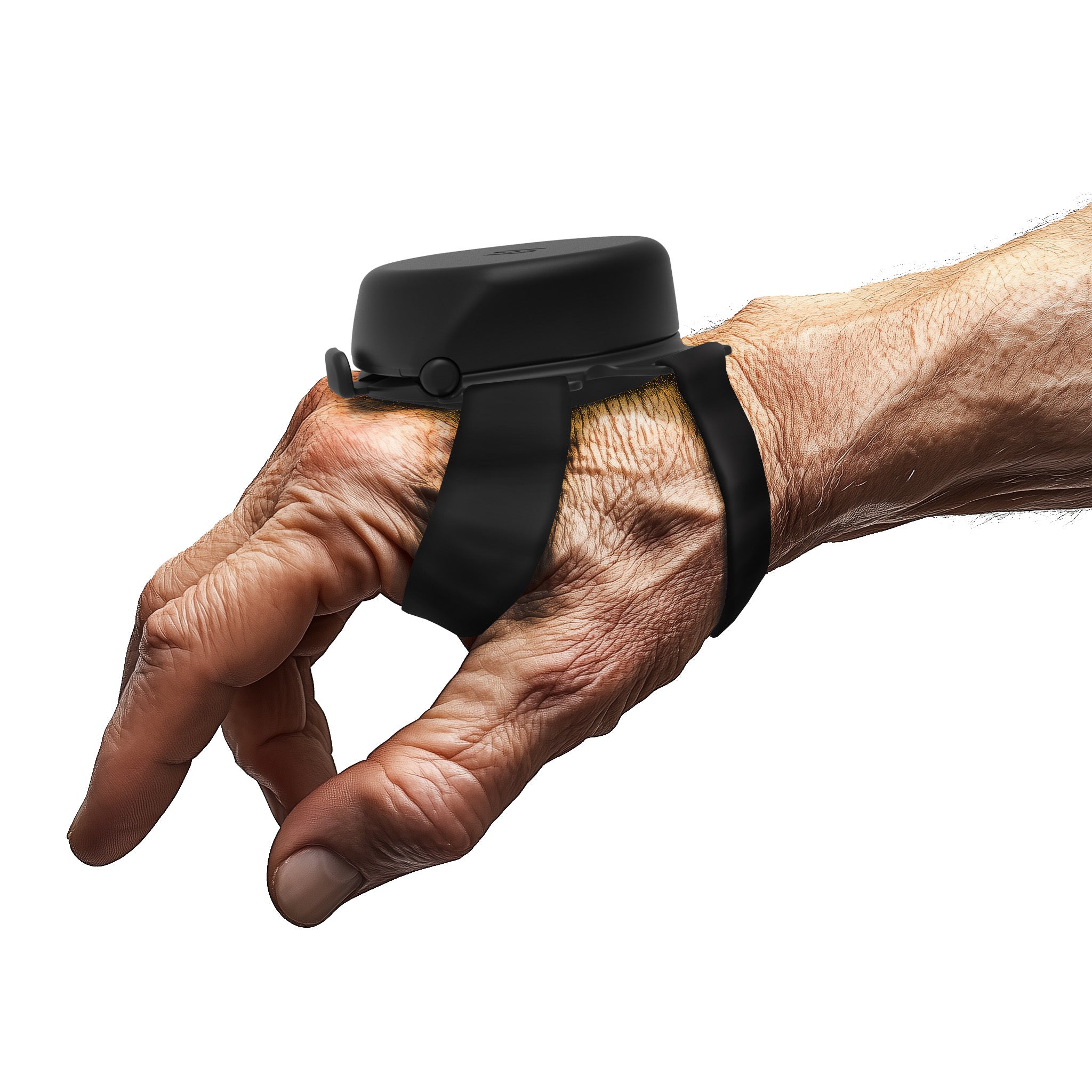Parkinson’s Disease (PD) is a progressive neurodegenerative disorder that primarily affects movement. It is caused by the loss of dopamine-producing neurons in a region of the brain called the substantia nigra. This dopamine deficiency disrupts the communication between nerve cells, leading to symptoms that impact both motor and non-motor functions.
Among its most recognizable symptoms, tremors—involuntary, rhythmic shaking—are often the earliest visible sign and one of the most distressing for patients. While not all individuals with Parkinson’s experience tremors, for many, these movements significantly affect their quality of life, autonomy, and psychological well-being.
In this blog, we’ll explore how tremors manifest in Parkinson’s Disease, why they occur, how they differ from other tremor types, their impact on daily living, and what strategies—medical, technological, and lifestyle-based—can help manage them.
What Are Tremors? Definitions and Classifications
Tremors are defined as involuntary, rhythmic muscle contractions that result in shaking movements in one or more parts of the body. Tremors can be classified into several types based on their cause, location, and when they appear:
-
Resting Tremor – occurs when the body part is at rest (a hallmark of PD)
-
Action Tremor – appears during voluntary movement
-
Postural Tremor – occurs when holding a position against gravity
-
Intention Tremor – increases as a person reaches toward a target
Parkinsonian tremors usually begin as resting tremors, most commonly affecting one hand, leg, or jaw. They tend to be asymmetric, starting on one side of the body before possibly progressing to both.
The Neurological Basis of Parkinsonian Tremors
Tremors in Parkinson’s Disease are believed to arise due to dysfunction in specific brain circuits—particularly the basal ganglia, thalamus, and cerebellum—all regions involved in motor control.
The central player is dopamine. This neurotransmitter helps regulate movement. In PD, the degeneration of dopamine-producing neurons disrupts the delicate balance of excitation and inhibition in the brain’s motor pathways. Abnormal rhythmic signals in these circuits result in the tremors observed in patients.
Interestingly, tremors in PD are not simply a direct result of dopamine deficiency. Research suggests they may involve additional neural loops, and in some patients, they are less responsive to dopaminergic treatment than other symptoms like rigidity or bradykinesia (slowness of movement).
How Parkinson’s Tremors Differ from Other Tremor Types
Distinguishing Parkinson’s tremors from other forms is essential for diagnosis and treatment. Here are the key differentiators:
|
Feature |
Parkinson’s Tremor |
Essential Tremor |
Cerebellar Tremor |
|
Onset |
At rest |
During action |
During intentional movement |
|
Frequency |
4–6 Hz |
6–10 Hz |
Variable |
|
Symmetry |
Often asymmetric |
Usually symmetric |
Variable |
|
Body Parts Affected |
Hands, legs, jaw, lips |
Hands, head, voice |
Hands, trunk |
|
Response to Alcohol |
Minimal effect |
Often improves |
No change |
|
Response to Levodopa |
May respond |
No response |
No response |
Essential tremor is often confused with Parkinson’s, but it usually involves action tremor and has a different etiology and progression.
Impact on Daily Living and Emotional Well-being
Tremors can deeply impact a patient’s functional independence and emotional health. Tasks that seem simple—buttoning a shirt, writing, drinking a cup of coffee—become difficult or impossible. The persistent shaking can lead to embarrassment in social settings, prompting withdrawal, anxiety, and even depression.
Patients may also struggle with:
-
Driving difficulties
-
Cooking and feeding challenges
-
Personal hygiene maintenance
-
Technology use (typing, using smartphones)
These limitations affect not just the individual but also caregivers and family, who may need to assist in daily activities, potentially leading to caregiver burnout.
Diagnosis and Monitoring of Parkinson’s Tremors
Diagnosing Parkinson’s involves a combination of clinical evaluation, patient history, and sometimes neurological imaging. There is no single test for PD, so observing tremors is crucial in early detection.
Key diagnostic elements include:
-
Tremor onset while at rest
-
Asymmetric presentation
-
Response to Levodopa treatment
-
Presence of other Parkinsonian features (rigidity, bradykinesia, postural instability)
Technologies are also evolving. Wearable sensors, smartphone apps, and motion capture systems are increasingly being used to quantify tremor severity and monitor disease progression over time. These tools can help tailor treatments and track response.
Treatments and Strategies for Managing Tremors
While Parkinson’s has no cure, several treatments can help manage tremors:
a) Medications
-
Levodopa-Carbidopa: The most effective medication for many motor symptoms, though tremors may be partially resistant.
-
Dopamine Agonists: Mimic dopamine’s action, useful in the early stages.
-
MAO-B Inhibitors: Prevent dopamine breakdown.
-
Anticholinergics: Sometimes prescribed for tremor-specific relief, especially in younger patients.
b) Deep Brain Stimulation (DBS)
DBS is a surgical option where electrodes are implanted into the brain (typically the subthalamic nucleus or globus pallidus). It delivers electrical impulses that help reduce tremors and other motor symptoms. DBS is typically reserved for patients whose symptoms are no longer well-controlled with medication.
c) Physical and Occupational Therapy
Therapists can help develop adaptive strategies and exercises that improve motor control, flexibility, and independence.
d) Lifestyle Adjustments
-
Use of weighted utensils and cups
-
Voice-to-text software for communication
-
Clothes with magnetic or Velcro fasteners
-
Stress reduction techniques (stress exacerbates tremors)
e) Emerging Therapies
Researchers are exploring focused ultrasound, gene therapy, and new drug targets. AI-driven wearables may soon predict symptom changes and personalize treatment.
Living with Parkinson’s Tremors: Coping, Support, and Outlook
Though tremors can be profoundly disruptive, many individuals with PD learn to adapt and lead fulfilling lives. Key elements of successful coping include:
-
Support networks: In-person or online support groups provide emotional comfort and shared tips.
-
Education: Understanding the disease helps patients make informed choices and advocate for care.
-
Mental health care: Therapy and medication may be essential to manage anxiety and depression linked to the disease.
-
Routine and exercise: Regular physical activity, such as tai chi or yoga, can improve motor control and reduce fall risk.
It’s also important for caregivers to seek support and education. Burnout and emotional fatigue are common, and proactive management is crucial for sustained care.
Regain Control with the Steadi-3 Glove for Parkinson’s Disease
Designed specifically to support individuals experiencing hand tremors due to Parkinson's Disease, the Steadi-3 glove by Steadiwear offers a groundbreaking, non-invasive solution that prioritizes control and independence. This Class I medical device uses innovative, battery-free technology that stabilizes the hand by counteracting tremors in real time. Lightweight and easy to wear, the Steadi-3 glove features adjustable straps and a self-calibrating mechanism, making it suitable for everyday tasks like eating, writing, or using a phone, without relying on pharmaceuticals or charging systems.
What sets the Steadi-3 apart is its clinically informed design and commitment to safe, evidence-based tremor management. While not a cure for Parkinson's Disease, it provides a practical way to reduce the impact of tremors and improve quality of life. The glove has been shown to significantly decrease tremor intensity for a majority of users, and it’s backed by a 30-day risk-free trial and a one-year warranty. Individuals are encouraged to speak with their healthcare provider to determine if the Steadi-3 is the right addition to their tremor management routine.
Conclusion
Tremors are one of the most visible and challenging symptoms of Parkinson’s Disease. They carry implications far beyond physical movement, impacting identity, independence, and emotional resilience.
Understanding the underlying mechanisms, recognizing how tremors differ from those in other conditions, and knowing the range of management strategies can empower patients and caregivers alike. While Parkinson’s remains an incurable disease, advances in treatment and technology, combined with community support, provide hope and tools for living well.
Conclusion
Tremors are one of the most visible and challenging symptoms of Parkinson’s Disease. They carry implications far beyond physical movement, impacting identity, independence, and emotional resilience.
Understanding the underlying mechanisms, recognizing how tremors differ from those in other conditions, and knowing the range of management strategies can empower patients and caregivers alike. While Parkinson’s remains an incurable disease, advances in treatment and technology, combined with community support, provide hope and tools for living well.



